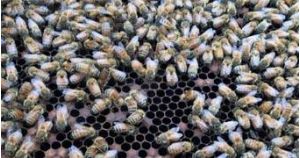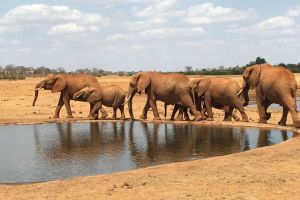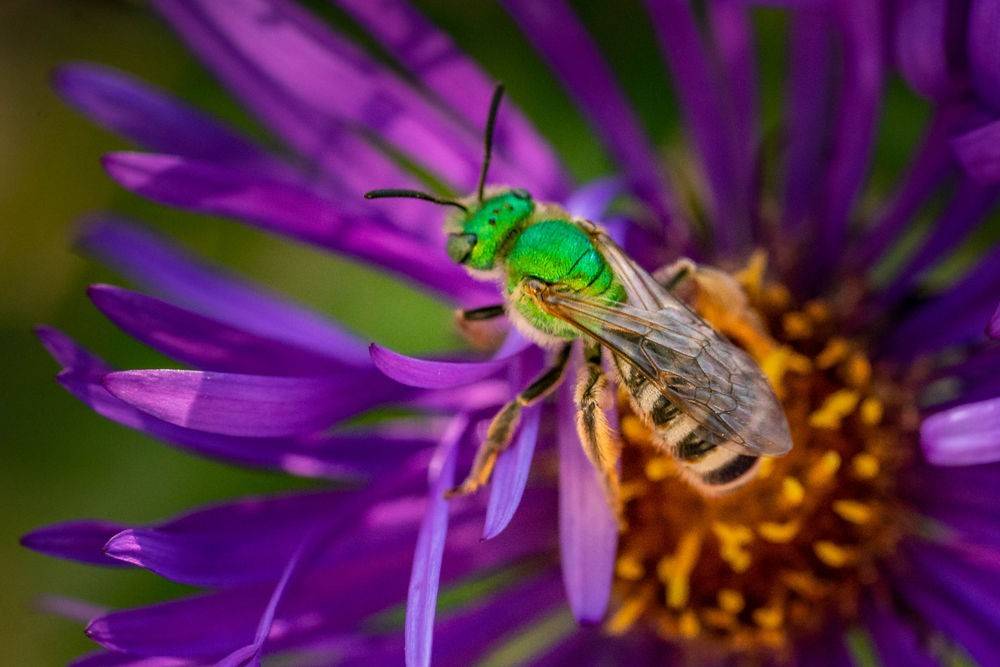By Florida Wildflower Foundation
Florida is home to more than 300 species of bees. They vary in size from 2 to 25 mm, and range in color from brown, black or red to metallic green or blue. In Florida, bees are active most of the year. Most nest in well-drained soil that is sparsely vegetated, but others nest in trees or other sources of wood, or plants with hollow stems. They may nest in spring and again in summer months.
Some bees are “specialists,” relying on a single wildflower species or family for food. Most, however, are “generalists” and gather pollen and nectar from a wide range of flowers.
Most native bees are solitary and are not usually aggressive as they are not defending a hive like the honey bee or other colonial bees. However, solitary bees may sting if surprised or threatened.
More than 80% of flowering plants and food crops are pollinated by insects. While gathering pollen and nectar for food, bees carry pollen from one flower to another, ensuring plant reproduction.
PLANNING YOUR BEE GARDEN
Create a corridor between fragmented natural habitat and provide beneficial forage resources for foraging bees and insects.
Choose sunny open areas with well-drained soil.
Plant 15-25 species for maximum diversity.
About Florida Bees
Florida is home to more than 300 species of native bees, of which 29 are endemic (found only in Florida).
The bee species can be found in six different bee families including Halictidae, Megachilidae, Andrenidae, Apidae, Colletidae, and Melittidae, and include 48 genera.
North America is home to over 4,000 bee species and worldwide there are over 20,000 species of bees.
The Sweat Bees (Halictidae):The sweat bees include a diverse group of colorful, small bees, many of which are so small that most people don't even realize they are bees.
The Leaf-cutter & Mason Bees (Megachilidae): These are an interesting group not only by the way they collect their pollen, but also how they build their nests.
Bumbles, cuckoos, carpenters, long-horned (Apidae): This diverse group of bees includes the non-native honey bee, as well as many other interesting native bees, especially those fuzzy bumble bees and woodboring carpenter bees.
Mining bees (Andrenidae):These ground nesting bees can be found mostly on early spring flowering plants and can sometimes be found nesting in aggregations.
Plasterer bees (Colletidae):These bees get their name for the cellophane-like secretion they use to line and waterproof the walls of their nest.
Melittid bees (Melittidae): This small family of bees is represented by only two species in Florida.
To learn more about all these bees, visit
www.floridasnativebees.com/
Your Sun 28/4/20





